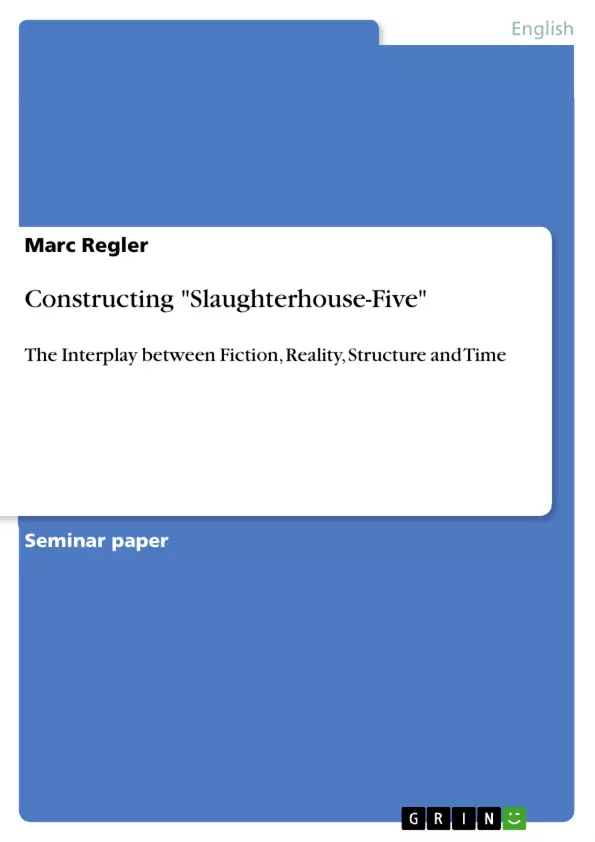Constructing Slaughterhouse-Five is a close reading of Kurt Vonnegut's Slaughterhouse-Five. It puts a special focus on the aspects of time and temporal structure in relation to the novel form and its narrative structure in relation to the protagonist Billy Pilgrim's personal trauma, his war experience and his time travelling in relation to the alternative model of time of the Tralfamadorians. Thus, it concentrates on the postmodernist criticism of an uncritical believe in linear time, teleology and progression as also represented in the form of linear narratives.
Table of Contents
- Introduction
- Telling the tale
- Telling the unimaginable
- The fiction of reality
- Mary O'Hare, war books and Roland Weary
- The Children's Crusade and history
- The Kilgore Trout novels
- Presenting a personal reality
- Tralfamadorian concepts
- The Tralfamadorian novel
- Tralfamadorian time
- Unstuck in time
- Billy and his story
- Billy, time and Tralfamadorian time
- Billy and the logic of Dresden
- Conclusion
Objectives and Key Themes
This essay examines the narrative structure of Kurt Vonnegut's Slaughterhouse-Five, focusing on the interplay between fiction, reality, time, and the trauma of the Dresden bombing. The essay explores how Vonnegut uses metafiction and alternative time concepts to grapple with the unimaginable and offer a personal perspective on historical events.
- The difficulties of narrating traumatic experiences
- The relationship between fiction and reality in shaping our perception
- The limitations of traditional narrative structures in representing complex realities
- The use of alternative time concepts to explore the nature of time and memory
- The role of metafiction in challenging conventional storytelling methods
Chapter Summaries
The essay begins by analyzing the first chapter, highlighting the narrator's struggle to adequately represent his experience of the Dresden bombing. The narrator grapples with the inadequacy of traditional narrative structures in conveying the depth of trauma and the limitations of language in expressing the inexpressible. He explores the challenges of separating fact from fiction and the impact of historical events on individual perception.
The essay then delves into the Tralfamadorian concepts introduced in the novel, focusing on the Tralfamadorian perspective on time and its implications for understanding human existence. The Tralfamadorians offer a non-linear view of time, where all moments exist simultaneously, which challenges the human concept of causality and the traditional linear narrative structure.
The essay concludes by examining the narrative structure of Billy Pilgrim's story, highlighting the way Vonnegut uses unconventional temporal arrangements to reflect Billy's experience of trauma and his struggles with memory and identity.
Keywords
Key concepts explored in the essay include: metafiction, narrative structure, trauma, Dresden bombing, time, memory, reality, fiction, Tralfamadorian concepts, linearity, non-linearity, historical narrative, individual perception, and the limitations of language.
- Arbeit zitieren
- Marc Regler (Autor:in), 2003, Constructing "Slaughterhouse-Five", München, GRIN Verlag, https://www.grin.com/document/16953



